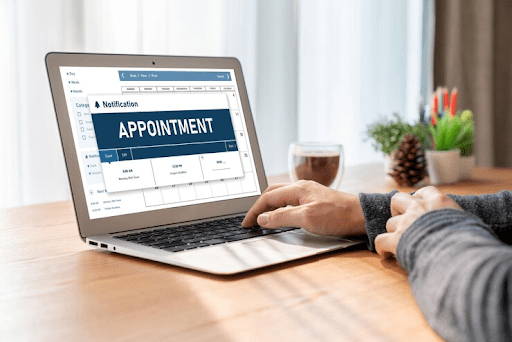Did you know that sending commercial emails has an average ROI of $42 for every dollar spent, especially with an effective subject line and confirmation? That’s right! This powerful tool can transform your business. With the right strategies, you can connect with your audience like never before through a successful email marketing campaign and valuable email marketing tips in modern email marketing. Crafting engaging emails is crucial to act and keep your subscribers hooked until the end. From personalized content to eye-catching designs in email marketing strategies, every detail matters with the right email marketing software and email marketing app. In this post, we’ll explore effective email marketing techniques that drive results to the end. Get ready to elevate your campaigns and boost your conversions.
Understanding Email Marketing Basics
Definition
Email marketing is a digital strategy. It allows businesses to communicate directly with potential and existing customers. This method helps build relationships and promote products or services effectively.
Consent and Value
Obtaining consent is crucial in email marketing. Subscribers must agree to receive communications. This ensures that the audience is interested and engaged. Providing value in emails is equally important. Valuable content encourages readers to interact with your brand. It can include exclusive offers, useful tips, or informative articles.
Integration with Other Channels
Email marketing works well with other digital marketing channels. It complements social media, SEO, and content marketing efforts. For instance, sharing blog posts through email can drive traffic to your website. Similarly, social media campaigns can encourage sign-ups for your email list.
A cohesive strategy enhances overall effectiveness. Customers receive consistent messaging across platforms. This increases brand awareness and loyalty.
Techniques and Tips
Email marketing techniques vary widely. Successful campaigns often use segmentation to target specific groups. Personalization boosts engagement rates significantly. A/B testing helps optimize email performance.
Common email marketing platforms include Mailchimp, Constant Contact, and Sendinblue. Many offer free plans for beginners. These platforms simplify the email marketing process.
Exploring the History of Email Marketing
Early Beginnings
Email marketing traces its roots back to 1971. Ray Tomlinson sent the first email between computers. This marked the start of digital communication. By 1978, commercial email marketers began using this tool for advertising. A notable campaign from Digital Equipment Corporation reached 400 users. This event laid the groundwork for future email marketing efforts.
Rise in Popularity
The commercialization of the internet in the 1990s significantly boosted email marketing’s popularity. Businesses recognized the potential of reaching customers directly through their inboxes. The convenience of sending messages at scale made it attractive. As more users adopted email, companies started using email marketing services to engage audiences.
Regulatory Changes
Key regulatory developments shaped email marketing practices. The Data Protection Act, enacted in 1998, set standards for handling personal data. This law required businesses to obtain consent before sending marketing emails. Compliance became crucial for successful email marketing campaigns. Marketers had to adapt their strategies to align with these regulations.
Modern Landscape
Today, many platforms offer robust email marketing software and apps. Businesses utilize these tools to create effective newsletter emails and manage their email lists. The evolution of email marketing continues, driven by technology and consumer expectations.
Different Types of Email Campaigns
Welcome Emails
Welcome emails greet new subscribers. These messages set the tone for future communication. They typically include a thank you note and an introduction to the brand. A strong welcome email can boost engagement rates significantly.
Newsletters
Newsletters provide regular updates to subscribers. They often contain valuable content, news, or tips relevant to the audience. Effective email marketing campaigns use newsletters to build relationships and keep subscribers informed.
Promotional Emails
Promotional marketing emails focus on special offers or discounts. They aim to drive immediate sales through enticing deals. Seasonal promotions align with holidays, targeting customers during peak shopping times.
Lead Nurturing Emails
Lead nurturing emails help convert potential customers. They guide leads through the buying process with tailored content. These messages address pain points and showcase solutions offered by the brand.
Seasonal Marketing Emails
Seasonal marketing emails leverage holidays for targeted promotions. Brands can capitalize on events like Black Friday or Christmas to attract customers. By creating urgency, these campaigns encourage quick purchases.
Advantages of Using Email Marketing
Cost-Effective
Email marketing stands out for its cost-effectiveness. Businesses save money compared to traditional advertising methods like print or TV ads. Many free email marketing software options exist, allowing companies to reach large audiences without high costs. This affordability makes it accessible for small businesses and startups.
Segmentation Benefits
Segmentation is a key feature in effective email marketing. It allows businesses to categorize their audience based on interests, behavior, or demographics. This targeted approach leads to personalized messages that resonate more with recipients. For instance, an online retailer can send tailored promotions to customers based on their previous purchases.
Performance Tracking
Tracking performance metrics is another significant advantage. Effective marketing emails provide insights into open rates, click-through rates, and conversions. This data helps marketers understand what works and what doesn’t. By analyzing these metrics, businesses can make informed adjustments to improve future campaigns.
Increased Engagement
Engagement rates increase when emails are tailored and relevant. Personalized content captures attention and encourages interaction. Customers appreciate receiving information that aligns with their needs and interests.
Data-Driven Decisions
Data-driven decision-making becomes easier with email marketing success. Marketers can test different subject lines or content styles to see what performs best. This iterative process enhances overall campaign effectiveness.
Challenges and Drawbacks to Consider
Spam Filters
Spam filters are a significant hurdle in email marketing. Many businesses face issues with deliverability due to these filters. Emails can land in spam folders, preventing people from seeing important messages. This can lead to decreased engagement and lower conversion rates.
Audience Interest
Maintaining audience interest is another challenge. With countless emails arriving daily, competition is fierce. People often overlook marketing emails, favoring personal or relevant content. To stand out, businesses must create compelling subject lines and valuable content. Testing different approaches helps identify what resonates best with the audience.
Mobile Optimization
Mobile optimization is crucial for effective email marketing. A significant portion of users checks emails on mobile devices. If emails do not display correctly on these devices, it can lead to poor user experience. Consistent design across all platforms ensures that the message reaches its intended audience effectively.
Additional Considerations
Businesses should also consider the costs associated with email marketing tools and services. While many options exist, choosing the right plan is essential for maximizing reach and feedback. Regular testing of strategies can help improve performance over time.
Steps to Start Your Email Strategy
Define Goals
Setting clear goals is crucial for an effective email marketing strategy. Goals provide direction and focus. They help measure success over time. For instance, a goal could be increasing the open rate by 20% in six months. Another might involve boosting sales through email campaigns by 15%. These targets guide your content and approach.
Build Your List
A targeted email list enhances your campaign’s effectiveness. Sign-ups should come from interested individuals. Use lead magnets like free eBooks or exclusive discounts to attract subscribers. This method ensures that your audience is engaged and relevant. A well-curated list leads to higher engagement rates and better conversions.
Choose a Platform
Selecting the right email marketing platform is vital for managing campaigns efficiently. Platforms like Mailchimp or Constant Contact offer tools to streamline your efforts. They simplify tasks such as segmenting your audience and analyzing performance metrics. A good platform supports automation, saving you time and effort in the long run.
Crafting Compelling Subject Lines
Brevity and Clarity
Subject lines must be short and clear. They should convey the essence of your message quickly. Research shows that most recipients glance at subject lines for just a few seconds. Aim for around 6-10 words to capture attention effectively.
Personalization Techniques
Personalization can significantly boost open rates. Use the recipient’s name or reference their previous interactions. This approach creates a sense of familiarity and connection. Companies that utilize personalized subject lines see higher engagement. Tailor your emails based on user preferences and behaviors.
Urgency and Curiosity
Incorporating urgency can prompt immediate action. Phrases like “limited time offer” create a sense of scarcity. This encourages recipients to open your email without delay. Curiosity plays a crucial role. Posing intriguing questions or hints about valuable content can lead to higher open rates. For example, “See what you’ve been missing!” stirs interest.
Examples and Templates
Utilizing templates can streamline the process of crafting compelling subject lines. Analyze successful articles or posts from your industry for inspiration. Gather examples that resonate with your target audience. By doing so, you can create effective subject lines tailored to your products.
Best Practices for Audience Engagement
Regular Content
Sending regular content keeps customers engaged. Value-driven emails maintain interest and build trust. Aim for consistency in your messaging. Monthly newsletters can keep users informed about updates or promotions.
Interactive Elements
Incorporating interactive elements boosts engagement significantly. Polls and quizzes encourage readers to participate actively. This interaction creates a sense of community among subscribers. It also provides valuable feedback on preferences. Engaged users are more likely to convert into loyal customers.
Analyze Behavior
Understanding subscriber behavior is crucial for effective targeting. Analyzing how users interact with emails helps tailor future content. Tools like Google Analytics can track open rates and click-through rates. Use this data to refine your approach. Personalization based on user actions increases relevance and satisfaction.
Measuring and Optimizing Campaign Success
Key Performance Indicators
Tracking key performance indicators (KPIs) is essential for evaluating marketing campaigns. Open rates indicate how many recipients engaged with your email. Click-through rates show the percentage of users who clicked on links within the email. Both metrics provide insight into campaign effectiveness.
A/B Testing
Conducting A/B testing can help refine various elements of your emails. Test different subject lines, images, or call-to-action buttons to see what resonates best with your audience. This process allows marketers to understand preferences better and optimize future emails accordingly.
Continuous Improvement
Utilizing feedback and analytics is crucial for enhancing future campaigns. Analyze data from previous efforts to identify trends and areas for improvement. Segment your audience based on behavior and preferences to tailor content more effectively.
Gathering feedback directly from subscribers can also provide valuable insights. Ask them about their preferences regarding content type and optimal sending times. Adjust your strategy based on this information to improve engagement rates.
Regularly reviewing these aspects helps ensure that marketing campaigns remain relevant and effective over time. By staying informed about subscriber behavior, marketers can adapt quickly to changing needs.
Summary
Email marketing is a powerful tool that can elevate your business game. You’ve learned the basics, explored its rich history, and discovered various campaign types. You understand the perks and pitfalls, along with steps to kickstart your strategy. Crafting eye-catching subject lines and engaging your audience are key to success. Plus, measuring outcomes helps you fine-tune your approach.
Now it’s time to take action. Dive into your email marketing journey with confidence. Experiment, learn, and adapt as you go. Remember, every great brand started somewhere. So why not start today? Get those creative juices flowing and watch your engagement soar!
At Beesavvy, we’re here to help you harness the full potential of email marketing. If you’re ready to elevate your brand, contact us today! Let’s create engaging campaigns that resonate with your audience and drive results.




